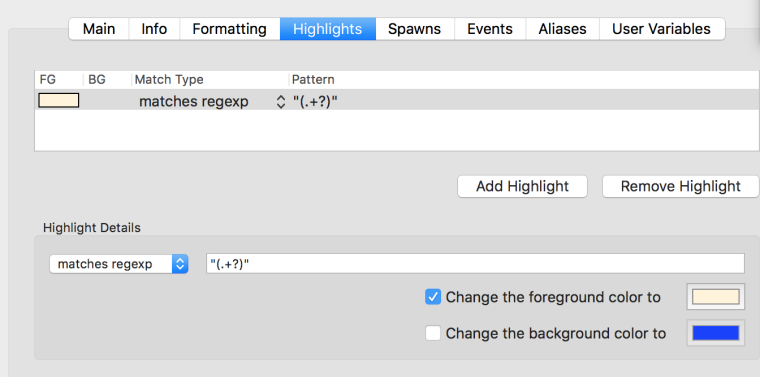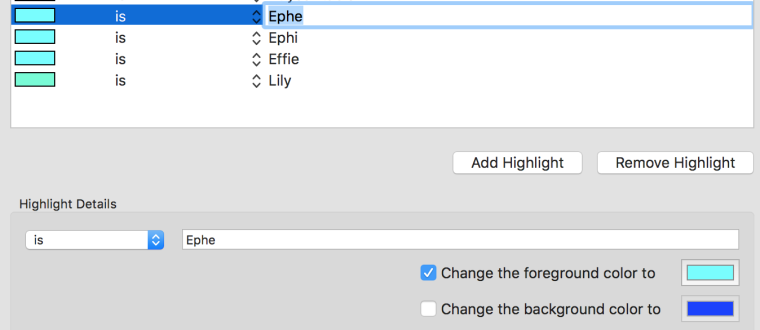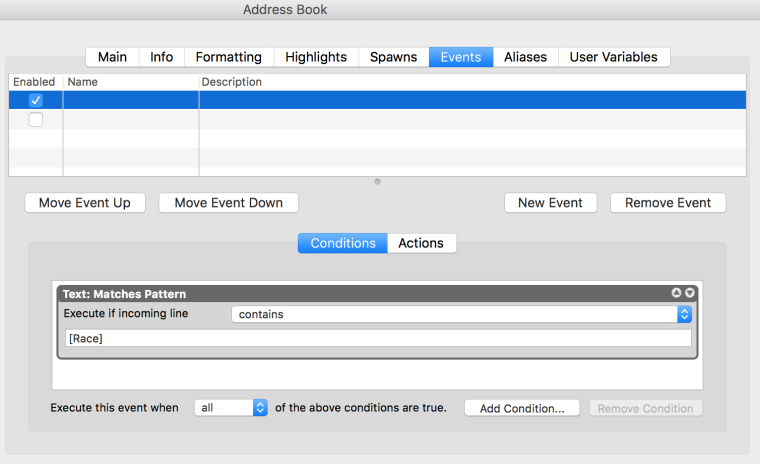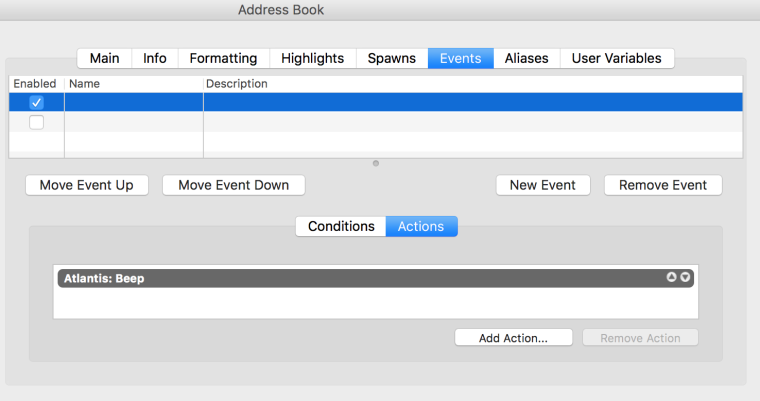Paragraphs, large scenes and visibility
-
@tinuviel said in Paragraphs, large scenes and visibility:
@ganymede said in Paragraphs, large scenes and visibility:
That someone is an asshole, unless you've stated a reason for posing slow, e.g., I'm at work and prone to idling for it.
I would argue that if you submit a reason for posing slowly, then they are an asshole for politely calling you on it. If you dont, and you are posing slowly, it means they're aware that you are slower than the rest and are taking an opportunity to talk about it. Which is gentlemanly, if nothing else.
Yeah. I mean we don't all like the same posing styles and that's fine; if you don't like the time I take or how I write it's quite fine to not go out of your way to interact with me more than you have to in the future. However calling me out for it, unless I'm actually just being a jerk somehow, is inappropriate even if it's attempted in a 'joking-not-joking' kind of way.
It's really not that big a deal.
-
@arkandel said in Paragraphs, large scenes and visibility:
is inappropriate
I mean if it's private, I disagree. I'd much rather be told that my style isn't jiving with people than to just simply not get play without being told why.
-
I mean if someone is routinely taking 15 or 20 minutes to pose without explanation will ask them why, because that is not how I like to play and I probably want to exit that scene if it's not a temporary thing.
-
@tinuviel said in Paragraphs, large scenes and visibility:
@arkandel said in Paragraphs, large scenes and visibility:
is inappropriate
I mean if it's private, I disagree. I'd much rather be told that my style isn't jiving with people than to just simply not get play without being told why.
I don't mind a courteous conversation about anything. But messaging is really hard on issues like this because the line between 'I don't like how you pose' and 'change the way you pose so I like it' is very thin and easily crossed, or can be perceived as such (which ends up being nearly the same thing).
-
@arkandel said in Paragraphs, large scenes and visibility:
@tinuviel said in Paragraphs, large scenes and visibility:
@arkandel said in Paragraphs, large scenes and visibility:
is inappropriate
I mean if it's private, I disagree. I'd much rather be told that my style isn't jiving with people than to just simply not get play without being told why.
I don't mind a courteous converastion about anything. But messaging is really hard on issues like this because the line between 'I don't like how you pose' and 'change the way you pose so I like it' is very thin and easily crossed, or can be perceived as such (which ends up being nearly the same thing).
If the conversation is polite, and intended as courteous, then there's no issue. Which is what I was getting at.
-
For the record, the reason I'm slow is...sigh...I hate how this is gonna sound. I'm not tooting my horn, I promise.
I really, really like to put thought into what my character says and does. What they wear and how they look and present themselves is all important to me. I have a habit having a lot dialogue within poses, making my characters long winded. So I try to break that up with body language and a dash of meta? I think that's what it's called. I don't do that thing where I express their thoughts outside of speech but I will pose outside of the moment.
So I'll start a pose and realize OH! This guy would be wearing a nice suit that's rumpled. Because I have that visualization issue, I need to take a second and google up suits so I get a better idea of how to describe it. Then I'm posing until OH! He's feeling sad and closed off. So I have to think about how to describe that without him saying he's sad and doesn't want to talk. Arms crossed, shoulders drawn in, eyes away, etc. One of mine is supposed to be smarter than me. I don't make a huge deal of it but sometimes a moment comes that I need to flex. Off to Google or game books to make sure I am using the right words and terminology.
So that's why I'm slow. I'm a tryhard. The person that pulled me aside wasn't an asshole, they were kinda giving me a heads up sort of thing to keep the big combat scene moving. Because when I show up, a large scene can and has slowed because of me. I'm adapting but it is a newish thing to me.
-
There's nothing wrong with your reasons.
But if you're in a combat scene, I can see why others would want you to hurry along a bit.
Yeah, adapting.
Doesn't mean you're a bad person.
-
@ganymede said in Paragraphs, large scenes and visibility:
There's nothing wrong with your reasons.
But if you're in a combat scene, I can see why others would want you to hurry along a bit.
Yeah, adapting.
Doesn't mean you're a bad person.
The way I usually handle combat scenes is to not overthink it because it doesn't make sense to. In a bar fight it doesn't matter if your character is a super complex person with deep personal trauma they're going through, stuff in their background that keeps them up at night, relationship issues they're struggling to resolve, etc.
You're about to get punched. Fight or flight! There's no need (and in fact it's probably a bad idea) to over-complicate it; respond on whatever instincts would drive the character at that time. Punch back, retreat, dive under a table, scream at the top of your lungs, beg for mercy, whatever. Do it fast even if it takes 10 minutes to pose all that fast action due to reasons. The decision itself should be a snap one because that's how it works.
-
To ride on that, I vastly prefer it when combat scenes are handled with just dice, if that's applicable, and no poses. Poses can be done later. Focus on the mechanics; worry about the RP later.
-
@ganymede To a point I would agree, however in some systems (for good or ill) what a person actually does in a scene determines the way dice are rolled.
-
@ganymede My style when I'm running a combat scene is:
Brief OOC declaration - "I am using my X power to do Y on Z enemy."
Roll
Brief OOC declaration of results - "That's a miss/hit/oh wow you mauled them."
Player directed to pose results as next player OOCly declares action.
And so forth.If you go silent on me on the declaration stage, I will ask three times, and then usually I will skip you for that round.
-
@tinuviel said in Paragraphs, large scenes and visibility:
To a point I would agree, however in some systems (for good or ill) what a person actually does in a scene determines the way dice are rolled.
It is system-dependent, yes. My experience with WoD games tells me that its combat scenes could go much faster if folks just rolled the dice, figured out the outcome, and then pose after. I've done this countless times, and folks are generally happier with the outcome.
-
@ganymede said in Paragraphs, large scenes and visibility:
@tinuviel said in Paragraphs, large scenes and visibility:
To a point I would agree, however in some systems (for good or ill) what a person actually does in a scene determines the way dice are rolled.
It is system-dependent, yes. My experience with WoD games tells me that its combat scenes could go much faster if folks just rolled the dice, figured out the outcome, and then pose after. I've done this countless times, and folks are generally happier with the outcome.
Eh, WoD was one of the systems I was referencing. It's entirely possible to do weird things with the dice by virtue of doing something weird in character. Though generally I'm more in favour of conflict being decided ahead of time with no need for dice rolls - alas I am in a minority when it comes to WoD. Everyone needs to flex their epeen.
-
@goldfish said in Paragraphs, large scenes and visibility:
So that's why I'm slow. I'm a tryhard. The person that pulled me aside wasn't an asshole, they were kinda giving me a heads up sort of thing to keep the big combat scene moving. Because when I show up, a large scene can and has slowed because of me. I'm adapting but it is a newish thing to me.
I actually really feel you on this. (Though I also have some chatty motherfuckers sometimes on top of this, and omg that shit gets really out of hand, fast.)
The meta stuff you're describing is what I tend to call 'editorial commentary' -- 'cause I've played with you on and off, and it's not the kind of snarky meta people bitch about, which is worth mentioning before anybody gets confuzzled. Some people still love or hate it, and they can get over that, honestly.
In combat stuff specifically or something crowded that's being GM'd or otherwise needs to move fast, I try to cut everything down to the bone. It's not as expressive or character-displaying at times as I'd like, but that's the kind of time where speed is going to be prioritized over quality to some extent. Not gonna lie, if you mostly do social/personal/more freeform scening -- and let's face it, that is the bulk of what many of us do on any given game -- it's a hard switch to flip, sometimes, when those situations do crop up. (And that's the only time it's really needed.)
It is the time to lean a little more on the editorial commentary, though: it's the time to say more than show, to some extent. It's the time for '<name>'s body language is dejected and s/he doesn't seem to want to talk' or '<Name>'s stance is standoffish. Not the time to talk.' vs. the couple of sentences to convey it through more subtle inference. On the upside, if you're already used to tucking some things like this into poses, it's a little easier than it is for people who never do, and that's a plus -- it gives you a good jumping off point for adaptation for those scenes.
I'll try to get a better example of what I'm talking about here, though I warn this is all pre-coffee-kicking-in so all of it will likely suck:
As John lays out the specifics of the plan, Sue listens with a furrow slowly deepening over her brow. Her eyes are on him, intently focused, as she processes the details and turns them over in her head to weigh the pros and cons of the approach her superior officer proposes. Uncertainty is written all over her face, and her arms cross over her chest uneasily as he reveals the end game he has in mind. Her tone is quiet when she finally speaks, breaking the eye contact to avoid looking at his face as she says, "That sounds risky. Is there an alternate entrance we could use to surprise the enemy instead?"
vs.
Sue listens as John lays out the specifics of the plan. He's the boss, and it's his call, but she's visibly uneasy with this approach. Tentatively, she says, "That sounds risky. Is there an alternate entrance we could use to surprise the enemy instead?"
While the fine detail isn't there, it gets the core characterization across where it's most needed, and it's a lot faster and easier to keep up with in the flow of a quickly-moving scene or a combat scene with a crowd that needs to progress more quickly due to time constraints.
-
@ganymede said in Paragraphs, large scenes and visibility:
To ride on that, I vastly prefer it when combat scenes are handled with just dice, if that's applicable, and no poses. Poses can be done later. Focus on the mechanics; worry about the RP later.
I think that depends on whether you’re aiming for combat RP or whether the combat is just a bump in the overall plot.
BSGU would’ve been pretty lame if every combat was resolved with some rolls and a summary pose from everyone

-
This has mostly all been covered, but I wanted to toss in some screen shots.
First, if you're playing on a game that's TinyMUX and uses the "usual" +poseorder code, you can do something like...
&posebreak me=%r%b%b%[[%xh[name(%#)]%xn]%]This will add a line break before a pose and the name of who is posing, so you can more easily track certain individuals.
So instead of...This is the pose done by Ephemeris. This is where Ephea has said stuff. This is the pose done by Asteria. This is where Asteria has said stuff.You get...
[Ephemeris] This is the pose done by Ephemeris. This is where Ephea has said stuff. [Asteria] This is the pose done by Asteria. This is where Asteria has said stuff.If your game client doesn't have customizable posebreak, please talk to the game admins! You can also ask if there's a "no spoof" command, such as on Arx. That helps.
Next, as @Roz said you can set quotes to highlight, and names to highlight.
For quotes, do "matches regexp" and
"(.+?)". Do it again for smart quotes:“(.+?)”. I chose to use a color that's not BRIGHT WHITE because Atlantis' default colors blend together (white and highlight are the same, I think?).

Next, make sure you have your name + the name of people you are keeping up with highlighted. If the name is something unique, just do "is" and "name". And set a ton of them, to include all your nicknames, friends, whatever you want.

Finally, sometimes you'll have a name that's very common and appears throughout the game. Example: On Arx, "Mae" is part of "Maelstrom". So we can do a regexp to make sure it ONLY matches the word exactly. So, it'll match Mae and not mae or Maelstrom.

Finally, a lot of games don't use
+posebreak, or their+posebreakdoesn't make noise. I find the ding letting me know when something happens is very helpful. So what you can do, in Atlantis, is set an Event so it catches some text and dings. This is a two-part process. FIRST, you need the &posebreak code I posted above. Then, go to "Events" and "New Event". For the Conditions, click "Add condition..." and choose "Text: Matches Pattern". Now, I think you could just put in*and that'd be ok. But for me, l did "contains" and then I input the name of the person I'm RPing with. Yes, that means I need to update this, but it's really not an issue for me.
Next, go to "Actions" and choose "Add Action..." and pick "Atlantis: Beep". There you have it, you'll get beeped when a certain poses. Great in small scenes and in big scenes, where you're RPing mostly with a single person.


Please just holler if you can think of something else that might help you! I might be able to make it work.
-
@faraday said in Paragraphs, large scenes and visibility:
BSGU would’ve been pretty lame if every combat was resolved with some rolls and a summary pose from everyone

Yeah, but your entire set-up is so far ahead of the curve that I am borderline-aroused when I get to use it.
It's just soooooo goooooooood.
My comment is aimed towards us World of Darkness troglodytes.
-
@skew Adding onto Skew's, I actually use one regexp to get all of my names into one highlight along with telling the system to only highlight it if it's a word by itself! To avoid the Mae vs Maelstrom thing. It's:
((Name1|Name2|Name3|Name4)(?!(\w|-))). You can do however many names you want divided by | (which is just an OR marker). I personally find it easier to just have the one highlight.